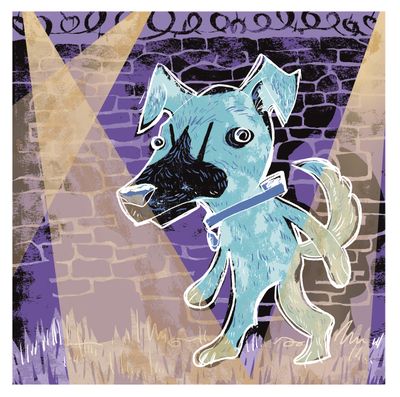Don’t let pooch go bad

Children and dogs: ideal combination or complete disaster?
The answer depends on whom you ask.
Check with the mother whose children, all younger than 8, have lost interest in the family pet, and she’ll tell you that the last thing she needs is another “child” to take care of.
Ask the kid being dragged around the neighborhood by his dog, and he’ll grumble that he’d rather be playing video games.
There are, however, many homes that combine dogs and children, with an outcome that is satisfying for all. What makes the difference is careful planning and education – human and canine.
As a dog trainer, I frequently encounter common troubles with clients who have both children and a dog. Here are my top four suggestions for ensuring a winning combination:
Puppy is biting during play: This occurs because young children run, squeal and play in a way that elicits mouth action from the puppy, whose teeth are very sharp. The more wild the play, the more likely a child will end up scratched, bleeding and in tears. No one is at fault here; it’s just a miscommunication between species.
I teach parents the games kids can play safely with a dog – hide and seek, and tag team recall, for starters. These games give puppy much-needed activity that also teaches him the value of responding to cues given by the child, and the child is delighted to have ways to play with the puppy that don’t involve injury.
Puppy jumps on children: Puppies jump up to get attention and action. A child’s response should be to immediately stand still and quiet – often referred to as “being a tree.”
The puppy should not receive attention – negative or positive – for behaving in this way, and all family members should commit to ignoring the puppy when it jumps up, and lavishing it with attention when it chooses to stand or sit on the floor instead. For more information on this approach, visit www.be-a-tree.com.
Puppy chews up children’s toys: A bit of simple training can remedy this problem. Under the guidance of a trainer, puppy can be taught an off-limits cue that can be used to help him identify items in his environment that are to be left alone.
Creating boundaries in the home is also of value. Puppy can’t get into a child’s room and chew up her favorite doll if he’s been taught that her room is off-limits and never to be entered.
Leashed puppy pulls children: Polite leash manners must be taught in a consistent and productive manner. I usually recommend that the parent teach the dog the basics, before letting the children get involved.
And I do not recommend that any child walk a gregarious puppy that outweighs him, as this sets up a scenario for puppy to learn many incorrect things, like habitual leash pulling.